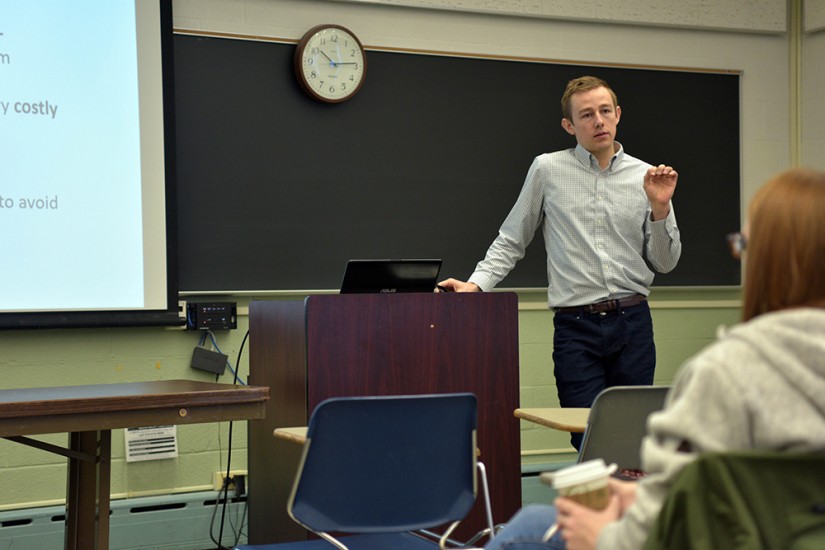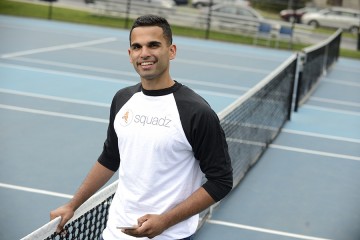John Hickey was teaching his first university-level class at Johns Hopkins when he found he wanted more feedback from his students.
"What I was looking for was more regular input on how I was doing as a teacher, as well as to find out if students understood the material, and if they felt like they were benefitting from in-class activities," Hickey said.

Image caption: Screenshot from the Tcrunch app developed by John Hickey
Image credit: Tcrunch
So the doctoral candidate in biomedical engineering thought like an engineer and invented an app that enables frequent and easy teacher-student interaction.
Available for free from the Apple and Google App stores, Tcrunch provides portals customized for both teachers and students. It not only facilitates real-time communication between both parties, but also analyzes the data collected. Instructors can either evaluate results in the app or have them emailed in the form of an Excel spreadsheet.
Hickey has preloaded the app with questions designed to solicit student feedback and a setting that allows students to provide comments anonymously.
"As an engineer, I know that frequent feedback is critical to improving something, whether it's an engineering design or teaching," Hickey said. "It's not practical for teachers to hand out and collect and analyze dozens of evaluation forms throughout a course, which is why I created Tcrunch."
Hickey worked on the app for about a year, testing it on students in classes he taught in the fall and during January's Intersession. The app's development was funded by the Shark Tank Program at the Center for Educational Resources.
Students not only were cooperative about using the app and sharing feedback, but they also seemed to enjoy the process.
"I told them outright that I was developing an app and needed user feedback to help me make it more successful for other teachers and students, so I urged them to be honest," Hickey said, noting that in an end-of-semester survey students reported they felt that Tcrunch gave them more of a voice in the classroom.
Jieun Park was one of them.
"Meeting instructors one-on-one to make suggestions about a class requires extra time and courage," said the senior chemical and biomolecular engineering and economics double-major. "Tcrunch made it easier and faster to make those suggestions to the teacher. It was a great method to communicate with the instructor about the class."

Image credit: Gina Wadas, Institute for NanoBioTechnology
Vivek Gopalakrishnan, a first-year biomedical engineering and electrical engineering major, also enjoyed using the new app and providing feedback.
"The app was very useful. It helped students reflect on the day's lectures and made the main points more concrete," Gopalakrishnan said. "I presume it was helpful for John as well, as it allowed him to gauge our level of understanding, and allowed him to better craft his future lectures."
That's exactly what Hickey reported had happened.
"It made me think critically about my role as a teacher and how I was facilitating learning," he said. "Was I spending too much time lecturing? Not devoting enough time to group work? It helped me ascertain that."
Hickey used Tcrunch in a number of ways, from taking attendance to asking students in real time if they understood something he just went over to asking how long the previous evening's reading assignment had taken.
But the app's most valuable feature, he said, is that he no longer needs to wait until the end-of-semester teacher evaluations to find out what students found effective or struggled with.
"The app allowed me to consider the students' perspective as I designed and taught my classes," he said. "Learning to be a good teacher is kind of like learning to sing. In order to improve, you need to listen to a recording of yourself singing. You end up saying, 'That's what I sound like?' Oftentimes our own personal feedback of how we are doing looks different from that of other people. Outside feedback is critical. The same is true in teaching."
Posted in Science+Technology, Student Life
Tagged engineering, student engagement









